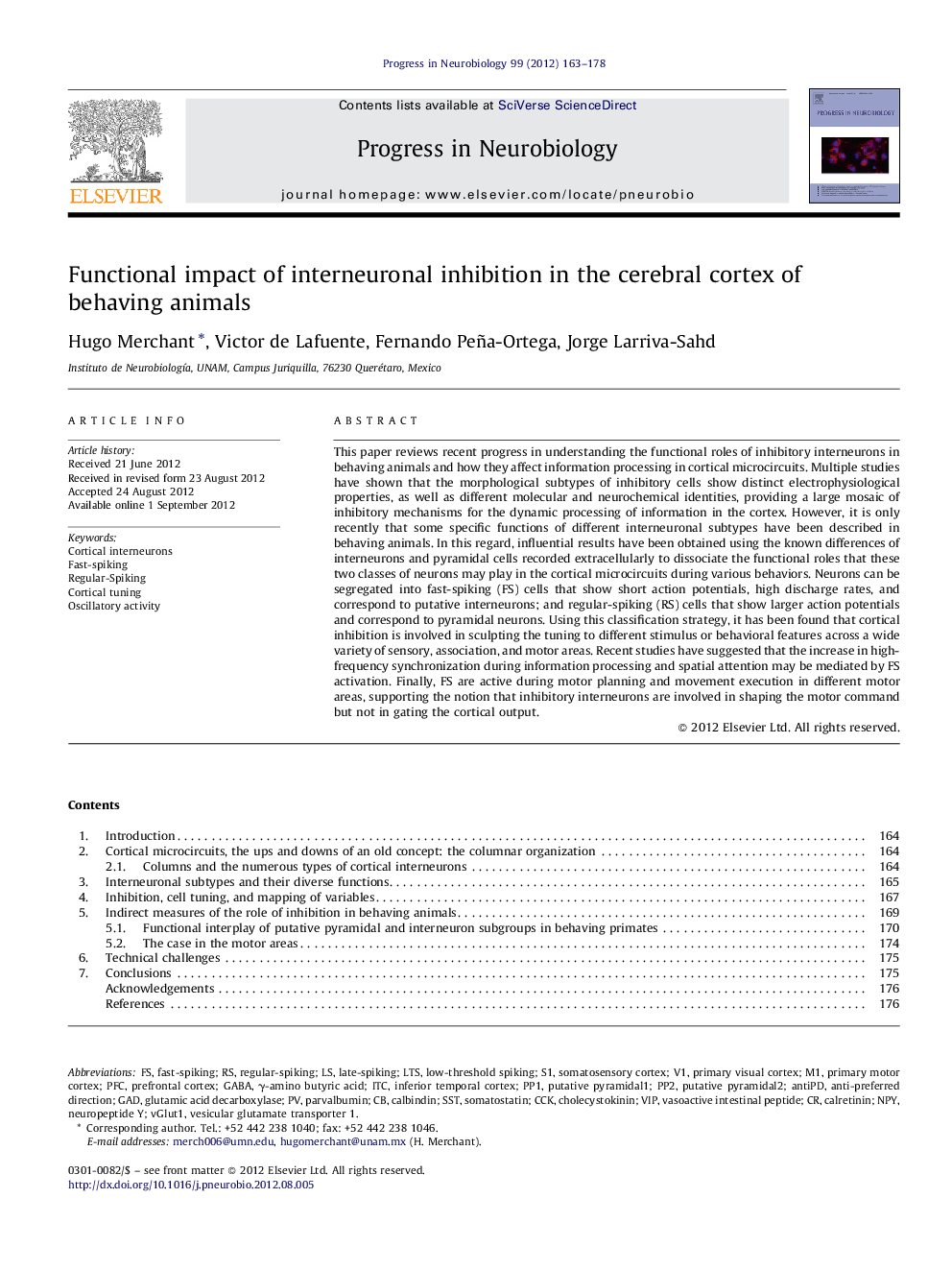| Article ID | Journal | Published Year | Pages | File Type |
|---|---|---|---|---|
| 4353423 | Progress in Neurobiology | 2012 | 16 Pages |
This paper reviews recent progress in understanding the functional roles of inhibitory interneurons in behaving animals and how they affect information processing in cortical microcircuits. Multiple studies have shown that the morphological subtypes of inhibitory cells show distinct electrophysiological properties, as well as different molecular and neurochemical identities, providing a large mosaic of inhibitory mechanisms for the dynamic processing of information in the cortex. However, it is only recently that some specific functions of different interneuronal subtypes have been described in behaving animals. In this regard, influential results have been obtained using the known differences of interneurons and pyramidal cells recorded extracellularly to dissociate the functional roles that these two classes of neurons may play in the cortical microcircuits during various behaviors. Neurons can be segregated into fast-spiking (FS) cells that show short action potentials, high discharge rates, and correspond to putative interneurons; and regular-spiking (RS) cells that show larger action potentials and correspond to pyramidal neurons. Using this classification strategy, it has been found that cortical inhibition is involved in sculpting the tuning to different stimulus or behavioral features across a wide variety of sensory, association, and motor areas. Recent studies have suggested that the increase in high-frequency synchronization during information processing and spatial attention may be mediated by FS activation. Finally, FS are active during motor planning and movement execution in different motor areas, supporting the notion that inhibitory interneurons are involved in shaping the motor command but not in gating the cortical output.
► Cortical neurons in behaving animals can be segregated into fast-spiking and regular-spiking cells. ► Fast-spiking cells shown short action potentials, high discharge rates, and are putative interneurons. ► Regular-spiking cells show larger action potentials and correspond to putative pyramidal neurons. ► Fast-spiking cells are involved in shaping cortical tuning and circuit synchronization. ► Fast-spiking cells are involved in sculpting the motor command but not in motor gating.
